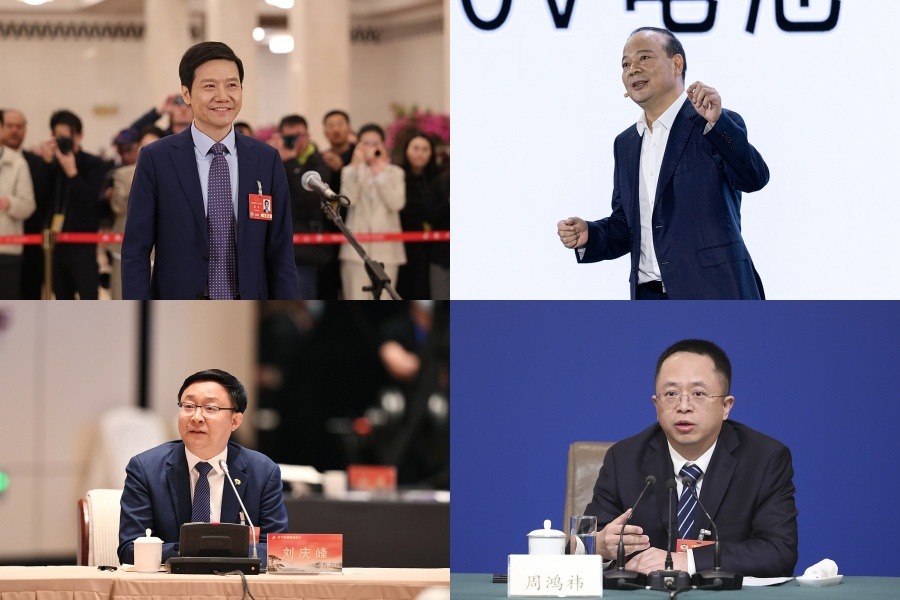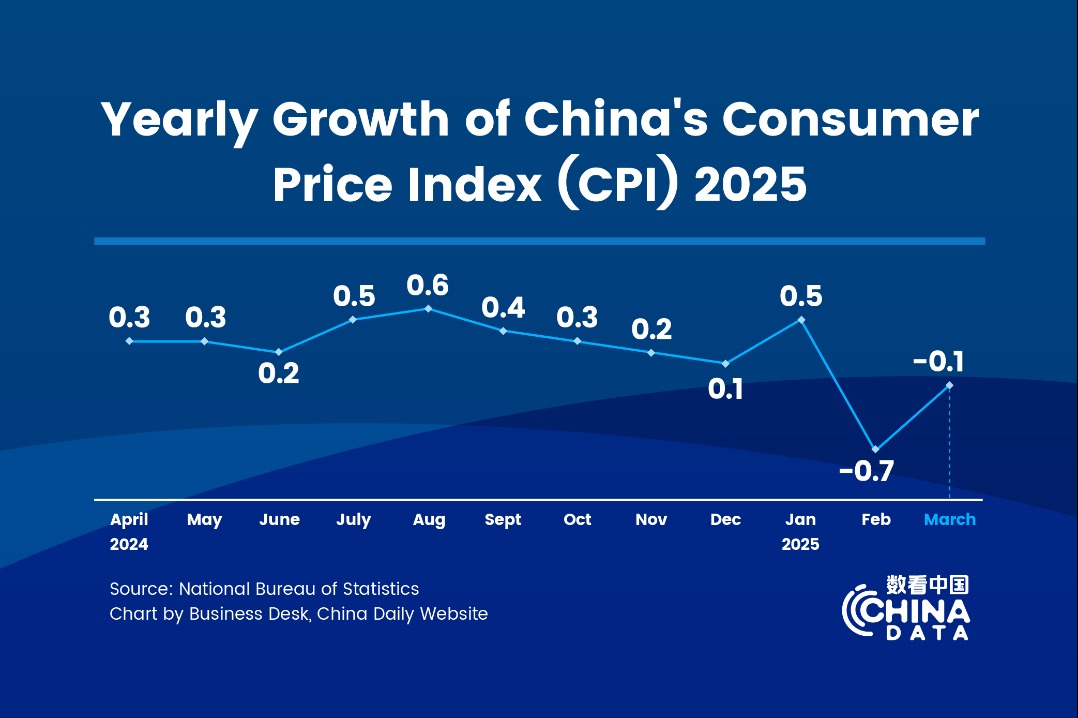Buoyed by big market, growing demand, consumption to be stronger biz driver


The COVID-19 pandemic has been the most severe global economic shock in the past half-century, affecting both developed and developing countries. China's economy was no exception, with consumption significantly impacted. In 2020 and 2022, China's total retail sales of consumer goods experienced year-on-year declines. However, as the impact of the pandemic has since receded, China's consumption market has gradually recovered, demonstrating resilience and unveiling new growth opportunities.
Vast market
In 2019, China's total consumption reached 40.8 trillion yuan ($5.62 trillion). By 2023, this figure had increased to 47 trillion yuan, marking approximately 15 percent growth over four years. This consumption market, valued at around $6.69 trillion, makes China the second-largest consumer market globally, trailing only the United States' $8.33 trillion market.
This vast market size presents significant opportunities for both domestic and foreign enterprises. From January to May 2024, total retail sales of consumer goods in China amounted to 19.5 trillion yuan, reflecting a year-on-year growth of 4.1 percent.
Catering, tourism lead way
The tourism and catering sectors were severely affected during the pandemic. However, post-pandemic, these two sectors have shown the most notable recovery. During the May Day holiday this year, domestic tourism trips numbered 295 million, significantly higher than in 2023 and surpassing the pre-COVID level of 195 million in 2019. Since early 2023, the number of travelers has consistently increased during each significant holiday. With the rise in travel, related industries have seen a recovery in revenue. In 2023, total revenue among star-rated hotels nationwide was 2.92 billion yuan, re-achieving a net profit. Similarly, the catering industry has shown a remarkable recovery, with total consumption in the sector reaching 5.29 trillion yuan in 2023, surpassing 2019 levels. From January to May 2024, catering revenue amounted to 2.16 trillion yuan, a year-on-year increase of 8.4 percent.
Resurgence is seen
Ctrip, a major Nasdaq-listed travel services provider, reported revenue of 44.5 billion yuan and a net profit of 9.9 billion yuan in 2023, up from 35.7 billion yuan and 7 billion yuan, respectively, in 2019. This recovery is particularly significant considering the pandemic years (2020-22), when annual revenue dropped to around 20 billion yuan. The first quarter report of 2024 shows continued improvement in revenue and profit, with company revenue reaching 11.9 billion yuan, a 29 percent increase from the same period in 2023, and a profit of 4.3 billion yuan, up from 3.4 billion yuan a year earlier.
Ctrip's numbers also indicate a growing number of foreign tourists visiting China. During the Dragon Boat Festival holiday this year, inbound travel orders on the platform increased by 115 percent year-on-year, and during the May Day holiday, they rose by 105 percent year-on-year. According to the National Immigration Administration, entries and exits by foreign nationals in the first quarter reached 13.07 million, a 305 percent year-on-year increase, with visa-free entries of foreigners reaching 1.99 million, a 266 percent year-on-year increase.
Recently, a US vlogger known as "Baobao Bear" popularized the internet meme "City or not City," inspired by scenes around Shanghai and widely imitated across the country. "I love Shanghai, and I've been living here for seven years," said the vlogger, highlighting the city's vibrancy and charm. "This is exactly what 'City' represents in my eyes." This trend reflects China's global appeal as a tourist destination. Amid this surge in tourism to China, travel agents from North America, Europe and other regions are focusing on the Chinese market, exploring innovative projects and boutique routes, as well as engaging in international tourism cooperation.
Evolving market
Since reform and opening-up began in 1978, each decade in China has witnessed new consumer needs. In the 1970s and 1980s, bicycles, sewing machines and watches were considered the three essential household items. The 1980s and 1990s saw a shift to refrigerators, televisions and washing machines. Air conditioners and computers became commonplace in the late 1990s. After 2000, there was a surge in housing and car purchases. In the past decade, smartphones and online platforms have thrived. Each of these sectors generated demand worth trillions of yuan.
Chinese consumption patterns continue to evolve. For example, Anta, a Hong Kong-listed sporting goods maker, offers a wide range of products from affordable running shoes to high-end golf gear. In 2023, Anta reported annual sales exceeding 60 billion yuan and profits over 10 billion yuan. In the first quarter, Anta's revenue reached $1.18 billion, up from $1.05 billion in the same period in 2023, marking a 12.6 percent increase. Anta's growth mirrors Chinese consumers' heightened focus on health and fitness.
At the macroeconomic level, consumption has emerged as a pivotal driver of China's economic growth. In 2019, China's GDP grew by 6 percent, fueled by an 8 percent expansion in consumption and a 5 percent increase in investment. In response to the COVID-19 outbreak in early 2020, the Standing Committee of the Political Bureau of the Communist Party of China Central Committee proposed during its May 14 meeting to leverage China's vast market advantages and domestic demand potential. This initiative aimed to establish a new development pattern that promotes mutual reinforcement between domestic and international economic circulation. Consumption made significant contributions to economic growth in 2021 (65.4 percent), 2022 (32.8 percent), and 2023 (82.5 percent).Meanwhile, the growth rate of investment has declined, with its contribution to economic growth decreasing from 87.6 percent in 2019 to 28.9 percent in 2023.
Future prospects
Looking ahead to the next decade, what will drive the emergence of new trillion-yuan markets in China? Could it be humanoid robots aiding the elderly, voice-controlled smart home devices or low-altitude drones revolutionizing travel times? As China continues to innovate and lead in technology, these burgeoning sectors have the potential to reshape consumer behavior and open expansive new markets. The development of AI, 5G technology and advanced manufacturing will likely play critical roles in shaping these trends, driving both consumer demand and economic growth. Furthermore, with an aging population, there will be a growing demand for products and services that enhance the well-being and independence of seniors, promising significant economic opportunities and improving millions of lives.
Studies indicate that younger Chinese consumers increasingly prioritize emotional satisfaction throughout the consumption journey, not merely the functionality, quality, price or quantity of products and services. For instance, the rise of virtual reality technology has popularized immersive experiences such as the "Disappearing Pharaoh VR Exhibition", held in Shanghai last May and returning this July. This exhibition offers unprecedented virtual tours of the Pyramid of Khufu, allowing visitors to explore its internal structure, uncover mysterious areas and delve into ancient Egyptian civilization.
In the digital age, augmented reality technology has become ubiquitous in daily life, notably transforming the fashion retail sector. AR virtual fitting technology offers Chinese consumers a novel shopping experience. For example, Tommy Hilfiger, a renowned fashion brand, has integrated this technology both online and offline. Through its WeChat mini program, users can register as members and enjoy AR virtual fittings from home, visualizing how clothes appear on them without physical try-ons. Tommy Hilfiger has also introduced AR digital outfits in offline stores, enabling consumers to virtually try on new styles in real time.
The Chinese consumer market, comprising 1.4 billion people and increasingly influenced by foreign tourism and cutting-edge technologies, brims with potential and unforeseen opportunities.
The writer is deputy dean of the School of Economics and Management, Tongji University.
The views don't necessarily reflect those of China Daily.




































